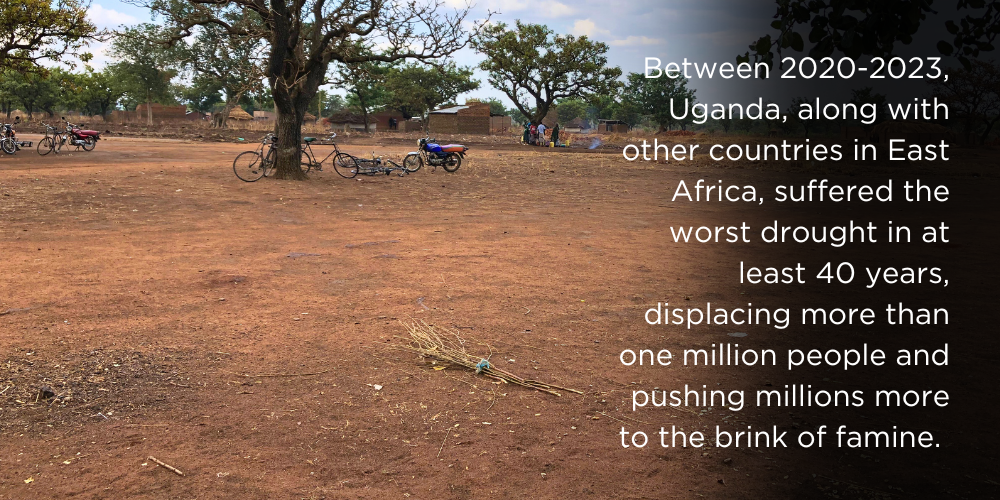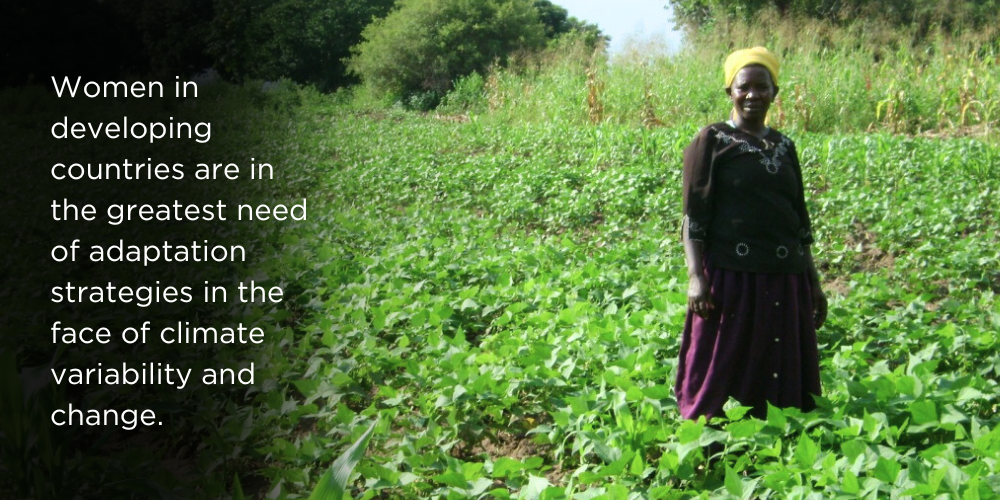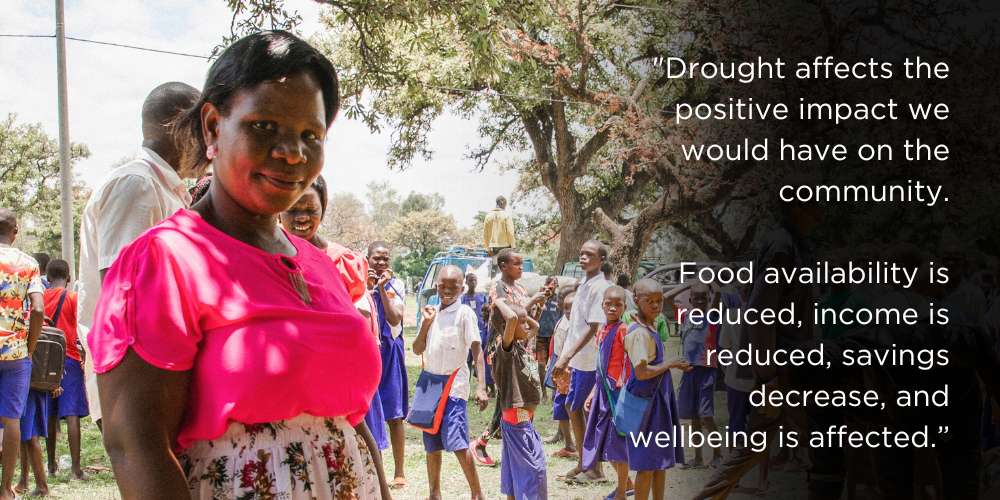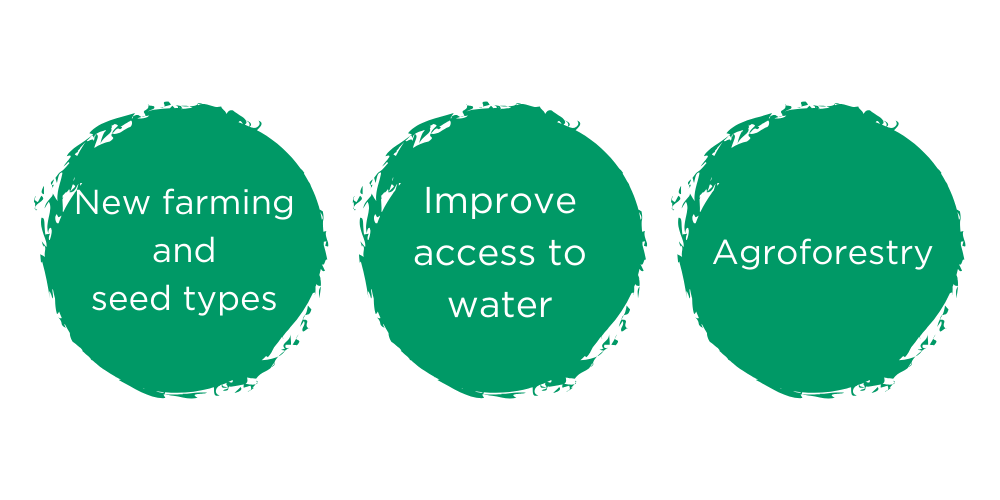Imagine waking up to a barren, cracking earth, where once lush fields flourished.
Water sources, once filled with the soothing rhythm of life, now lay there, empty, and lifeless. Welcome to northern Uganda, in the cruel clutches of a heart-wrenching, relentless drought that has caused catastrophic effects for the last 5 years.
Droughts can have severe consequences on agriculture, water supply, and food security. Our farming communities in Australia know the reality of this all too well. In northern Uganda, where agriculture is a crucial part of the economy and livelihoods, prolonged dry spells can lead to crop failures, water shortages, and increased food insecurity. Livestock may also suffer due to a lack of water and forage.

Early 2017 saw drought hit northern Uganda, followed by extremely heavy rains towards the middle of the year. Between 2020-2023, Uganda, along with other countries in East Africa, suffered the worst drought in at least 40 years, displacing more than one million people and pushing millions more to the brink of famine. Climate scientists have concluded it would not have happened if not for human-caused climate change.
A now ever-changing climate is impacting Ugandans by increasing the lack of reliability in water availability. With climate scientists confirming 2023 as the hottest year on record, it’s no wonder that rising temperatures are leading to a shift in the seasonality of rainfall. With March-June and July-November the two historical and predicted rainy seasons, the country is now experiencing a more pronounced rain period in the autumn and the rest of the year being hotter and drier. Agriculture is dependent on stable rainfall seasons, with higher risks of losing harvests due to too much or too little rain. Additionally, a higher percentage of rain will fall in singular events, leading to disasters such as floods and, consequently, droughts increasing in severity and frequency, making Uganda one of the most vulnerable countries in Sub-Saharan Africa to the effects of climate change.
Women, especially marginalised women, have always been more vulnerable to the challenges of survival, and the impact of climate change is no exception. The Intergovernmental Panel on Climate Change (IPCC) has found that women, primarily women in developing countries, are disproportionally affected and in the greatest need of adaptation strategies in the face of climate variability and change. Women are more vulnerable than men to the impacts of climate change due to their dependence on natural resources and limited access to land, credit, agricultural inputs, decision-making structures, technology, and training that, if given access, would enhance their capacity to adapt to climate change.

The impact of drought on our programs
With approximately 90% of Cents for Seeds participants women, the impact of shifting seasons and delayed rainfall is being felt in lost harvests. These harvests are the livelihood of most participants, and the devastating consequences of a lost crop are felt throughout the family unit for an extended period of time. Florence Ademun, Love Mercy Uganda’s Head Agronomist and Project Coordinator, said that drought is a major setback in the Cents for Seeds program, with the climate event disrupting the process for current and future participants.

“Drought affects the positive impact we would have on the community. Food availability is reduced, income is reduced, savings decrease, and wellbeing is affected.
“When drought sets in, we are totally affected in all ways: instead of moving to new communities to support women who are yet to participate in the program, we continue trying to help the previous participants because we have to support them over again due to drought.”
Florence says she encourages the participants not to lose hope despite the increasingly drier and hotter rainy seasons.
“We always encourage our women not to lose hope because seasons are different; if the crops are destroyed in one season, you can still grow in the next season and be able to get a good harvest, if all goes well. So, whatever little you have harvested, make sure you keep some for planting in the next season. Or, if all your crops were destroyed, you must have an alternative source of income. This is why we encourage them to participate in the village savings and loans groups that we have created.”
What are we doing to build resilience and adapt?
In 2018, Love Mercy launched the program Well Worth It to help provide reliable water sources for hundreds of homes in northern Uganda. Since then, we have drilled 70 new wells including 2 solar-powered boreholes that provide five times the water supply of an ordinary borehole well. We are looking at ways to maximise the supply of water to villagers and harness the available resources, given the expectation that the changing climate is going to cause further extreme weather events, including drought, in the future.
In 2021, Love Mercy started deepening plans for climate resilience in Cents for Seeds, looking at a three-tier approach to prevention, mitigation, and knowledge sharing. These tiers include:

1. New farming and seed types – We are looking into the soil varieties of villages, which can vary significantly even between neighbouring communities. The team hope to introduce two new seed types in 2024 that have historically performed well in the face of drought.
2. Improve access to water – as a landlocked country, Uganda is heavily reliant on rainfall for farming and WASH purposes. Considering additional ways communities can access water is essential to wellbeing and a basic human right:
Irrigation – a pilot project has been funded in 2023 to assess farming practices and provide training on a small-scale kitchen garden irrigation plot.
Rainwater harvesting – utilising this natural resource to store and use for crops or drinking water in times of drought.
Solar-powered boreholes – expand access to clean drinking water at a singular location and offer neighbouring villages access to the water point without the system running dry and a wait time for replenishment.
3. Agroforestry – the deforestation of Uganda at an alarming rate has reduced soil quality and fertility and wreaked havoc on farming practices. Planting of trees on a plot of land helps restore hydration and nutrients to the land, acts as a windbreak to protect crops and offsets carbon. It is a straightforward way to restore the land of Uganda, that, if farmed to its full potential, is expected to feed four times the population.
We are committed to improving our projects and ensuring the needs of the community are met in the way that they see fit. We acknowledge that we have a responsibility to protect our planet and ensure sustainable use and replenishment of its resources.
There is hope for mitigating the impact of climate change in Uganda, and around the world too. If you would like to be part of the solution, then please help us by donating or fundraising for our programs that are changing lives in northern Uganda. Let’s imagine a new reality together, one where everyone has access to safe, clean drinking water, a reliable food source, an income to provide for their families and hope for the future.
